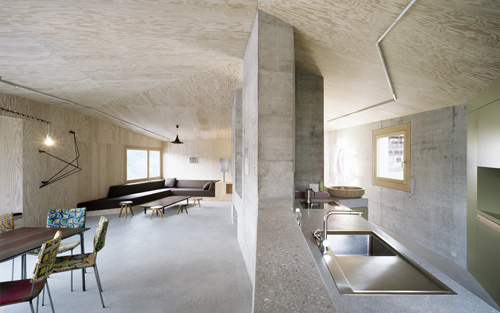Concrete Built
Concrete is one of the most versatile, durable and cost-effective building materials known to man. It is also environmentally sustainable, with green credentials that outperform both steel and timber.
In this section of the website we explore several principal benefits of concrete that go to make it the second most consumed substance on Earth after water.
Concrete is completely non-combustible (classified an A1 fire resistant material under EN 13501-1) and has a slow rate of heat transfer, making it a highly effective barrier to the spread of fire.
Through concrete's excellent thermal mass energy consumption in commercial and residential buildings can be reduced by up to 50% - a key component in the UK's effort to reduce its greenhouse gas emissions.
The UK is self-sufficient in, and a net exporter of, concrete. Unlike steel, the UK is able to produce almost all the concrete it needs domestically. This self-sufficiency enhances concrete's sustainability by minimising the need for transport and supporting the UK economy.
Concrete is a small net contributor to greenhouse gases responsible for 2.6% of UK CO2 emissions in 2002. This compares with 33% of total CO2 emissions from transport and 47% from buildings in use.
All concrete systems share the same basic attributes - beauty, strength, durability, low maintenance, energy efficiency, environmental friendliness, and peace and quiet. Which concrete building technique is right for you depends on the labour force and predominant building practices in your area. Whatever your choice, you can rest assured that your beautiful concrete home is built to last.
What is a precast floor?
A precast floor is a concrete floor that has been manufactured in a factory under strict quality controlled conditions, rather than concrete floors that are poured on site (insitu) or timber floors. Precast floors now represent 70% of all ground floor s laid in the UK.
In recent years they have started to become more popular at first floor level, as people under stand the benefits a precast floor gives. We will talk about this later in the leaflet but in the meantime, what choices of precast floors are there.
Main Ingredients:
Cement
This grey powder, when mixed with water, forms the glue to bind together the other ingredients.
The most commonly used cement is Normal Portland Cement. It is so called because of the similarity in appearance of the earliest concrete to Portland Stone- a widely used natural stone of the period of its invention
Coarse Aggregate
The coarse aggregate or stone content provides much of the bulk of concrete. It is important to use a strong, well-graded aggregate. The aim is to combine the different sizes of aggregate in such a way as to achieve the optimum packing of the particles and so reduce voids to a minimum. Aggregates are most commonly crushed rock or naturally occurring gravel.
Fine Aggregate (Sand)
Sand acts as a fill material, filling the voids between the larger particles. It can be either natural sand or crushed rock fines. In general, the finer the sand, the greater the water demand in the concrete mix.
Water
Water is essential to react with the cement, hardening to form a solid matrix, binding the aggregate and sand together. The water content should not be too high, as the strength will decrease. The general rule is if it's good enough to drink, it's good enough for concrete.


